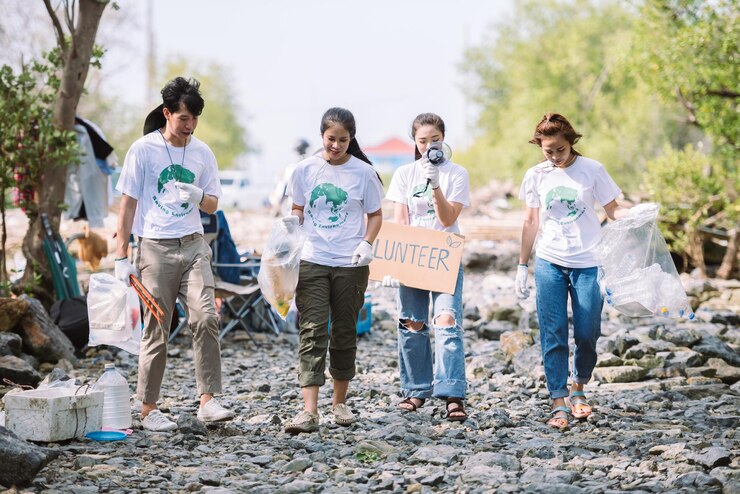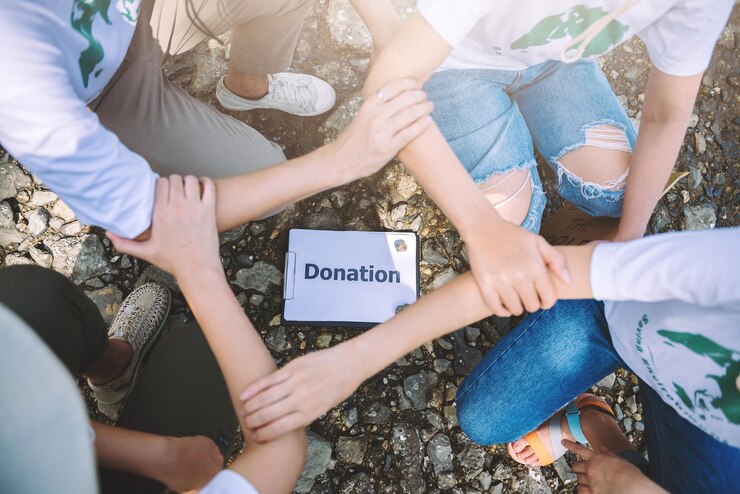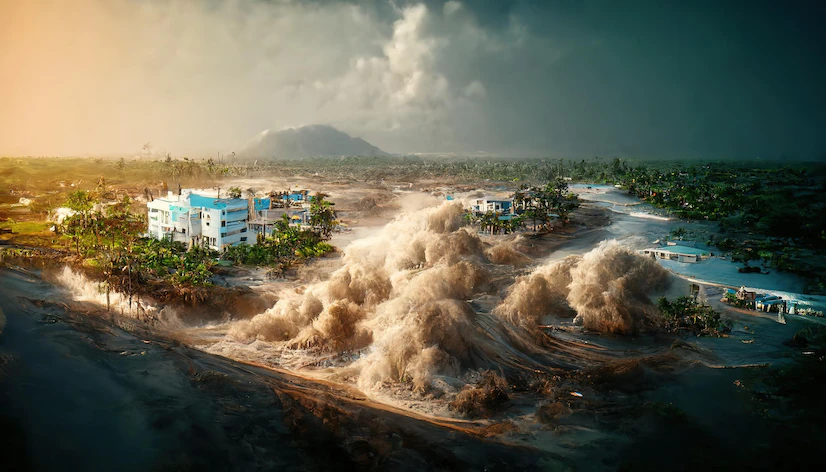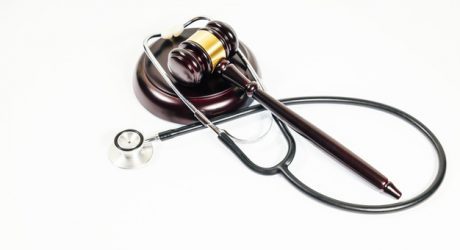Did you know that from 2010 to 2022, an average of two hurricanes made landfall per year in the U.S.?
Hurricanes are natural disasters that can cause property damage and destruction in their path. Despite this, there is a hopeful side to these catastrophic events. They can bring people together.
When a hurricane is approaching, individuals from various backgrounds come together to prepare and support one another. This sense of community and camaraderie is a silver lining in the midst of chaos.
Find out how communities in hurricane land come together during stressful times. Read on to learn what happens during a hurricane and how people recover from hurricanes.
Volunteering And Relief Efforts

One of the most heartwarming responses to a natural disaster is the outpouring of support from volunteers and relief organizations. These individuals and groups selflessly give their time, resources, and efforts to help those in need.
They provide shelter, food, clothing, medical aid, and emotional support for survivors. Without these volunteers and organizations, the road to recovery would be much longer. It will also be harder for affected communities.
They Show Strength In Unity
It’s a common saying that “strength lies in unity” and this rings true during times of disaster. When people help each other, they create a powerful force that can overcome any obstacle.
In the face of adversity, individuals put aside their differences and work towards a common goal. This unity and sense of belonging is what gives people the strength to keep going, even in the darkest of times.
Provide Neighborly Love And Support
In times of disaster, neighbors become more than just people who live next door. They become allies and have a support system. Neighbors check on each other, offer a helping hand, and share resources.
This camaraderie and sense of community is crucial in rebuilding a neighborhood. Everyone works together to restore what was lost.
Acts of Kindness
Amidst the destruction, there are always stories of small acts of kindness that make a big impact. This can be sharing a meal with someone who has lost everything. Or it is offering free services like haircuts or childcare.
These simple acts of kindness can bring hope and comfort to those in need. They also serve as a reminder that even in the darkest of times, there is still goodness in humanity.
They Harness Technology For Disaster Management

Technology has increasingly become a critical ally in disaster management. It enables communities to recover from these natural disasters more effectively.
For instance, social media platforms have been utilized for real-time updates. They use it to rally volunteers and coordinate relief efforts. These platforms also serve as a lifeline for people to communicate their safety status to their loved ones and the outside world.
Mobile applications designed for disaster situations also play a pivotal role. These apps could provide emergency alerts. It can also provide guides for emergency preparedness and tools for requesting help.
Additionally, crowdfunding platforms are often used to raise funds. This enables a global audience to contribute and be aware of what is happening with the funds.
A Lesson In Resilience
The aftermath of a hurricane is not easy for any community to endure. It takes strength, resilience, and determination to pick up the pieces and start again. Communities learn the power of coming together and never giving up.
These lessons in resilience help during disaster recovery. It also serves as a reminder that no matter what challenges may come, we are stronger when we face them together.
Local Government Intervention
Local governments take the helm in orchestrating immediate emergency responses and recovery plans. They are responsible for coordinating with various federal agencies to secure necessary resources. This can include manpower for rescue missions and funds for rebuilding damaged infrastructure.
Moreover, local authorities are tasked with implementing evacuation plans and opening temporary shelters. They also ensure the dissemination of vital information to keep their constituents safe.
Local governments also assess and report the storm damage to higher-level authorities. This aids in the timely allocation and distribution of aid and resources where they are needed most.
Involvement Of Government Agencies
In addition to local governments, various government agencies play an important role in disaster response and recovery. The Federal Emergency Management Agency is often at the forefront of providing resources. They offer help to communities affected by hurricanes.
Other agencies such as the Department of Housing and Urban Development, Small Business Administration, and Red Cross also provide crucial support in rebuilding communities. They help individuals and businesses get back on their feet.
In the aftermath of a hurricane, individuals and businesses may struggle to meet their tax obligations. The Internal Revenue Service (IRS) understands this. They offer certain relief measures such as extended deadlines for filing tax returns and making payments.
However, it is important to note that these are not blanket extensions and eligibility criteria must be met. Individuals and businesses must prove reasonable cause for their failure. To better understand the consequences of such failure, check out this article about what are IRS tax penalties.
Related: 7 Reasons Why Tax Planning Is So Important In Retirement
They Display Solidarity

Solidarity is a potent force in disaster-stricken communities. When people stand together, they can weather any storm. This show of solidarity can come in many forms. It can be in the form of financial aid or emotional support.
It also serves as a beacon of hope in challenging times. It is a reminder that we are all human beings with a shared responsibility to take care of each other and our planet.
And this solidarity continues even after the immediate crisis has passed. It is a lesson that we should carry with us in all aspects of our lives. We should come together, support one another, and create a better world for everyone.
They Understand The Value Of Preparedness
Communities affected by hurricanes also understand the importance of preparedness for future disasters. They know the devastating impact of being caught off guard. They are determined to be better equipped for any future storms.
This can include measures such as building stronger infrastructure. It can also involve creating emergency plans and investing in disaster relief funds. By taking steps towards preparedness, communities can reduce the impact of future disasters. This also helps them protect their citizens.
In essence, the value of preparedness lies in its ability to empower communities. It fosters a culture of cooperation that ensures an effective response when hurricanes strike. It also helps to minimize the long-term effects and speed up the recovery process.
They Redefine Normalcy After Disasters
In the wake of such catastrophic events, communities work to redefine their new normal. They re-establish routines as a way of regaining a sense of order and control over their lives.
Schools become a focal point of these efforts. It provides not just education but also a comforting sense of familiarity. It also provides structure for children caught in the upheaval.
Local businesses also play a vital role in redefining normalcy. Owners strive to reopen their establishments, even if in temporary or reduced capacity. These businesses serve as important communal hubs. They offer a place for people to connect, share their experiences, and support each other.
Recreation also plays a part in the healing process. Community events like town fairs can offer a much-needed diversion and a chance for neighbors to come together in a positive setting. These strengthen their bonds as they navigate their new reality together.
They Show Appreciation For Life and Nature
Disasters like hurricanes remind us of the fragility of life and how quickly everything we know can change. In these moments, communities come to appreciate the value of each other and the environment they live in.
The destruction caused by hurricanes also serves as a reminder to take better care of our planet. As climate change continues, communities are taking steps to reduce their impact on the environment. This includes implementing sustainable practices and advocating for policies that protect our planet for future generations.
Communities affected by hurricanes may suffer immense loss and devastation, but they also gain a newfound appreciation for life and the beauty of nature. It is this appreciation that allows these communities to come together and rebuild in the face of disaster.
Hurricane Land: Rising Up Through the Storm
Hurricanes may bring destruction, but they also reveal the true strength and resilience of communities. From acts of kindness to government aid to a newfound appreciation for life and nature, hurricane land communities showcase the best of humanity in the face of adversity.
As we continue to navigate through uncertain times, let us remember the power of coming together. Let us learn from these communities and strive to create a better world for all.
Let’s continue to spread hope and kindness, just like the inspiring communities affected by hurricanes do every day. Together, we can weather any storm and emerge even stronger on the other side.
Did you find this content interesting and helpful? If you did, you’re in the right place because we have more where this came from. Keep reading our blog to find more interesting articles on different topics.
Read Also:




























